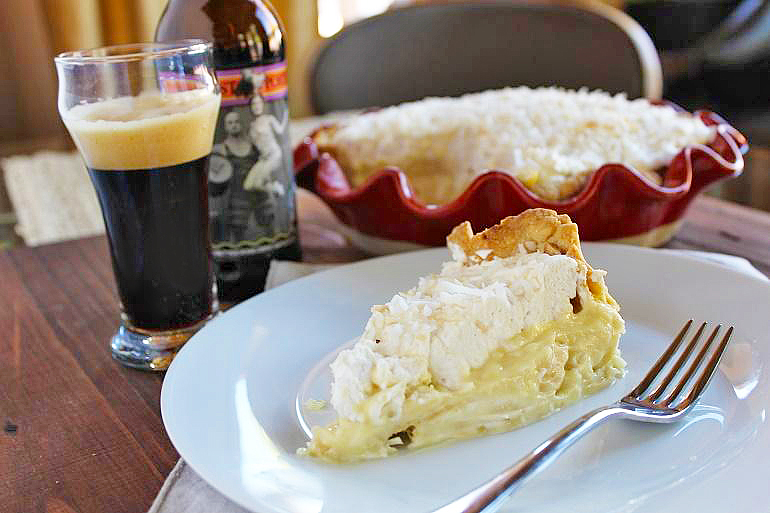Start 14-Day Trial Subscription
*No credit card required

Use Beer Flavor Families To Guide Pairings
Whether you’re hosting an elegant weekend dinner or dining on midweek take-out, these seven flavor profiles for beer, developed by Greg Engert, the Beer Director of Churchkey restaurant in Washington, D.C., will help you choose brews to match food.
CRISP, REFRESHING, AND BALANCED
These types of beer tend toward balance between fruity yeast esters, malt, and hops. That means a drier finish, which also enhances a sense of refreshment.
Amber Lagers and Marzens are perfect for Taco Tuesdays or Spicy Thai Thursdays.
Try crab, lobster, and lighter fish with more delicate fruity styles, such as American Blonde Ales and Kölsch beers, or with snappier, drier Pilsners and India Pale Lagers. The biscuity malt tones of Amber Lagers and Marzens also pair perfectly with chili and spicy chicken.
HOP BEERS
Hops have the last word in these brews. Earthier styles like English Pale Ale or Extra Special Bitter, as well as the bolder American India Pale Ales and Imperial IPAs, are well suited for finger-licking foods like pizza, juicy burgers, fish and chips, and barbecue.
Even in some of the maltier versions such as California Common, American Amber Ales, and American Barleywines, the hops can be king, so stick with dishes that can stand up to the hops.
MALT
If you’re looking for the beer equivalent of a warm blanket on a brisk night, these styles are you. Being malt-driven, you can expect baked bread or biscuity qualities with flavors of nuts, toffee, caramel, toast, or fruit. They pair well with hearty meals or robust soups like French onion. Our Beer Soaked Beef Stew (see recipe below) serves up perfectly with many styles in this category. Try it with a nutty Brown Ale, a toasty Bock, or a rich Scotch Ale. Our favorite pairing with the stew was Bell’s Best Brown Ale.
Scottish Ales, Bière de Garde, and English Barley Wines are also malt-driven with hints of fruit or toffee. Soup, salads, and apple or pecan pie are good companions.
RICH, ROASTY & DARK
Sometimes silky smooth, sometimes dark and dry, these brews all have roasted grains in common, bringing to mind the flavors of coffee and cocoa. These are your very darkest beers. Schwartzbier, Porters, and Stouts can provide a chocolate or hazelnut experience, while American Stouts and Imperial Stouts are drier with notes of dark chocolate and espresso. Shepherd’s Pie, sausages and barbecue pair well with beers in this category. These darker beers often pair well with desserts and not just the chocolate variety. Our Coconut Cream Pie (see recipe below) is heavenly with Smuttynose Brewery’s Robust Porter.
SMOKY & MEATY
Dark and somewhat mysterious, these brews have a dramatic side, thanks to malts kilned over smoke, or the finished beer being aged in Single Malt Whisky oak barrels. Steinbraus and Smoked Porters are two styles that smolder with subtle smoke. Rauchbier, on the other hand, is practically meaty with its bonfire-like smoked flavors suggesting sausage or bacon. The delicate flavors of raw fish provide a clean base for these beers, but you could also go bold with a pairing of sausage or game.
FRUIT & SPICE
These brews are great to share with friends who love wine but claim to hate beer. Bitterness takes a backseat to let fruit and spice dominate. The brighter varieties, such as Hefeweizens, Saisons, and Tripels, go well with foods like pork, chicken, curries, or jambalaya. Others with darker fruit qualities have aromas similar to red wine. Pair a romantic night of steak followed by a chocolaty dessert with Dubbels and Belgian Dark ales.
TART & FUNKY
Known simply as “Sours,” the brews that make up this category are anything but simple. Styles like Berliner Weiss, Oud Bruin, Flanders Red Ales, and Fruit Lambics are citrusy and fruity, whereas Wild Ales and Gueuze Lambics can have farmy, leathery, and other barnyard qualities from wild yeast. (Hence the term “funky.”) When pairing these, make sure the food is as sour, tart, or funky as the beer. Blue cheeses and salads with sharp vinaigrettes are a good place to start.
We used Deschutes Brewery’s Dissident sour brown ale in the Beer Soaked Beef Stew. The sour and malt blended together in the stew, creating deep, rich flavors.
NOTE: Please take our guidelines with a grain of salt. Eating and drinking are in the taste buds of the beholder. Oysters on the half shell are complemented by an oyster stout, of course, and other stouts. But they also are divine with a grapefruit IPA, which tends to contrast in taste and clear the palate for the next round. And, we could go on at length about smoked porter and oysters…
Coconut Cream Pie

Photo credit: Sherry Dryja
INGREDIENTS:
1 cup sweetened flaked coconut
1-1/2 cups coconut milk or cream
1-1/2 cups half-and-half
3 egg yolks, beaten
¾ cup white sugar
½ cup all-purpose flour
¼ teaspoon salt
1 teaspoon vanilla extract
1 9-inch baked pie shell, completely cooled
Sweetened whipped cream for topping
DIRECTIONS:
Preheat the oven to 350 degrees F.
Spread the coconut on a baking sheet and bake it, stirring occasionally, until golden brown, about 5 minutes. Set aside ¾ cup of the toasted coconut in a bowl to be used in the mixture and ¼ cup of the coconut in a separate container to be used with the topping.
In a medium saucepan, combine the coconut milk, half-and-half, egg yolks, sugar, flour, and salt. Mix well. Stir constantly over low heat until the mixture thickens like pudding.
Remove the pan from the heat and stir in ¾ cup of the toasted coconut and the vanilla extract.
Pour the filling into the pie shell and chill until firm, about 4 hours.
Top with whipped cream and sprinkle the remaining ¼ cup of coconut flakes over the top.
Beer Soaked Beef Stew

Photo credit: Sherry Dryja
INGREDIENTS:
¼ cup olive oil
3 tablespoons butter
2 cups all-purpose flour, plus 1-2 tablespoons more for thickening
Salt and freshly ground pepper, to taste
2-3 pounds beef chuck or stew meat
24 ounces of a malty brown ale
1 small bunch of thyme sprigs, bundled with kitchen twine
6 garlic cloves, smashed
3 small strips of orange zest
2 bay leaves
2-1/2 cups beef stock
½ pound new potatoes, cut in half
1-2 carrots, chopped
1 pound mushrooms (button or cremini), cut in half
Pinch of sugar, optional
½ bag frozen peas
DIRECTIONS:
Preheat a large heavy-bottomed pan or Dutch oven over medium-high heat with the oil and butter.
Pour the flour, salt, and pepper into a large sealable bag. Seal the bag closed and shake until the salt and pepper are thoroughly mixed into the flour.
Add the meat to the flour mixture and reseal the bag tightly. Gently shake the bag until all the meat is coated. You may need to do this in stages. Unseal the bag and remove the meat, shaking off excess flour.
Add the meat in a single layer to the preheated pan. Work in batches, if necessary, so as not to crowd the meat. Brown the cubes on all sides and remove it to a plate for use later.
Add the beer to the pan and bring up to a simmer. Make sure to scrape the bottom of the pan to loosen up the bits of browned meat stuck on the bottom. Once the beer is hot, add the meat, thyme smashed garlic, orange zest, bay leaves, and beef stock. Salt and pepper to taste. Bring the mixture to a boil and then reduce the heat to a simmer and cook uncovered until the liquid starts to thicken, about 15 to 20 minutes.
If the stew isn’t thick enough by this point, add 1-2 tablespoons of flour to a small bowl. Spoon ½ cup of hot stew broth into the bowl. Whisk the flour and broth together to form a paste. Add to the pot of stew and stir until completely dissolved.
Cover and cook on low heat for 2 hours.
After 2 hours, add the potatoes, sliced carrots, and mushrooms. If using the sugar, add it as well. Turn the heat up slightly and simmer, uncovered, for about 30 minutes, until the vegetables and meat are tender. Stir occasionally. Add the frozen peas during the last minute or two of cooking and stir it all together.
Taste for seasoning and add more salt or pepper, as needed. Remove the thyme and bay leaves before serving.



